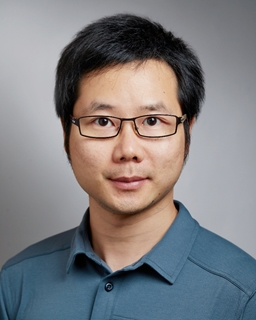检测到您当前使用浏览器版本过于老旧,会导致无法正常浏览网站;请您使用电脑里的其他浏览器如:360、QQ、搜狗浏览器的极速模式浏览,或者使用谷歌、火狐等浏览器。
 下载Firefox
下载Firefox
检测到您当前使用浏览器版本过于老旧,会导致无法正常浏览网站;请您使用电脑里的其他浏览器如:360、QQ、搜狗浏览器的极速模式浏览,或者使用谷歌、火狐等浏览器。
 下载Firefox
下载Firefox
学术报告
题 目: Building Nuclear Pore Mimics with DNA Origami
Associate Research Scientist in Department of Molecular Biophysics and Biochemistry & Department of Cell Biology, Yale University
时 间: 2月22日(周三)11:00-12:00
Meeting ID: 724 429 3098
Password: 654321
https://zoom.us/j/7244293098?pwd=UGRQT1ZTY3dkOUJQY0lXY3J4SndsUT09
主持人: 林一瀚 研究员
摘 要:
The nuclear pore complexes (NPCs) on the nuclear envelope control the bidirectional exchange of molecules between the nucleus and cytoplasm. Delivering the virus genome into the host nucleus through the NPC is pivotal in human immunodeficiency virus 1 (HIV-1) infection. However, the molecular mechanisms of viral nuclear entry remain poorly understood due to the complexity of the NPC and technical challenges in recapitulating such a complex system in vitro. Here we built a suite of NPC mimics — DNA-origami channels containing nucleoporins with programmable arrangements — to model the nuclear entry of HIV-1. The artificial NPC platform provides a transformative toolset for the investigation of functional molecular interactions that govern the physiological nucleocytoplasmic transport and the nuclear entry of retroviruses.
Qi Shen obtained his PhD in physical chemistry from Peking University, focusing on structure-based design of peptide and small-molecule drugs. He did postdoc research at Yale University, where he worked on multidisciplinary projects and became well versed in DNA nanotechnology, protein engineering, biochemistry, and structural biology. Specifically, he used DNA origami technology to construct artificial nuclear pore complexes (NPCs) to study the mechanisms underlying the nuclear transport of HIV-1 virus, which has led to an innovative synthetic biology platform and the discovery of a wealth of biological insights. Dr. Shen has published 12 articles as the first/co-first author in prestigious journals, including Nat. Struct. & Mol. Biol., Nat. Chem., JACS, Angew. Chem., ACS nano, and PNAS. He is broadly interested in interdisciplinary research at the crossroads of nanotechnology, biophysics, and synthetic biology.
